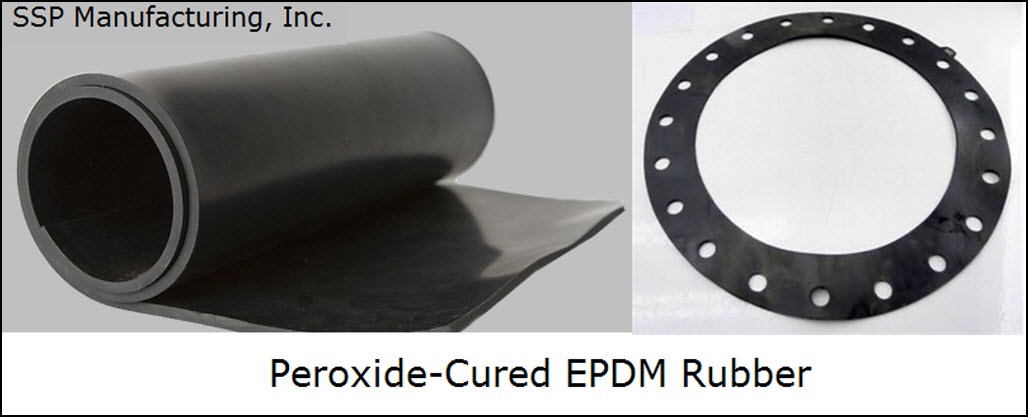 sales: gm@sspseals.com Toll Free: +1-888-238-SEAL Request A Quote
sales: gm@sspseals.com Toll Free: +1-888-238-SEAL Request A Quote
Gaskets and seals are exposed to varying temperatures and pressures, as well as harsh chemicals when used in industrial environments. To survive the extremes, these seals and gaskets are manufactured using a variety of elastomeric materials. Neoprene and EPDM are two popular elastomeric materials used for making these seals. Although the seals and gaskets made of neoprene can withstand several extreme conditions, EPDM is considered a better material. EPDM is cured with peroxide and sulfur to improve its characteristics for specific applications. Of these two, peroxide-cured EPDM material is gaining popularity nowadays, owing to its specific properties. What are these properties? Read the post to know more.

A Brief Introduction to Ethylene Propylene Diene Monomer (EPDM)
Ethylene propylene rubber (EPR) is an elastomer made using propylene and ethylene monomers or ethylene-propylene copolymers. At times, a third monomer— ethylene propylene diene terpolymer— is also added to improve its vulcanization characteristics. The EPDM material can resist sunlight, weathering, ozone, and several other environmental constraints. This material also offers excellent flexibility at low temperatures, and is known for its electrical insulation properties and chemical resistance.
Peroxide-Cured EPDM or Sulfur-Cured EPDM: Which is better
EPDM cured with sulfur is inexpensive and used widely for standard applications. Although sulfur-cured EPDM material offers excellent flexibility over peroxide-cured EPDM, it has certain drawbacks. Sulfur-cured EPDM material is prone to hardening, has poor compression set, and may alter the properties of fluids that come in contact with it. On the other hand, peroxide-cured EPDM material offers excellent heat and chemical resistance, and possesses good compression set properties. But, peroxide-cured materials are difficult to produce, so they are slightly expensive than sulfur-cured ones, and suited for long-term use.
Why Peroxide-Cured EPDM Gaskets and Seals Can be an Asset to Your Business
In recent years, peroxide cured EPDM sealing options have gained popularity across various industries, owing to the following properties:
In addition to the above-discussed properties, peroxide-cured EPDM gaskets and seals are known for their aging resistance, and are unlikely to discolor or bloom, even if used for a long time. Also, these gaskets and seals will cause no discoloration or staining of PVCs or metals. Peroxide cured EPDM gaskets are not recommended for applications where they may come in contact with greases, aliphatic, chlorinated, and aromatic hydrocarbons, mineral oils, and other fuels. If you plan to invest in gaskets for applications that demand hygiene then peroxide-cured EPDM gaskets are perfect. It is also important that you source them from a reliable manufacturer like SSP Seals.
Apr 17, 2024
Embracing Innovation in Sanitary Gaskets for 2024Mar 20, 2024
Explore All About Industrial Oil SealsJan 08, 2024
Top Reasons for Using Wiper Seal in Hydraulic SystemsDec 19, 2023
Typical Food-Grade Seal Failures and Strategies for ResolutionNov 22, 2023